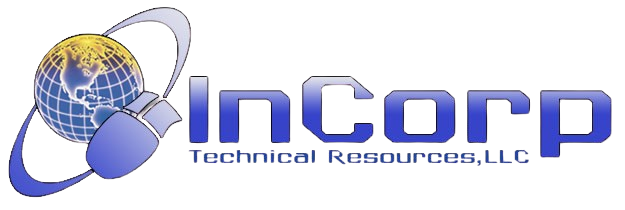How a Payroll Service Helps You Stay Compliant With Tax Laws
How a Payroll Service Helps You Stay Compliant With Tax Laws Home Blog Business owners face relentless pressure to comply with tax laws. Regulations shift frequently; even small payroll mistakes can trigger audits or fines. Staying current with deadlines, deductions, and filing requirements takes time most teams don’t have. Yet non-compliance can quietly drain resources and damage your credibility. Relying on a payroll service isn’t just convenient; it’s a strategic move to keep your business protected and aligned with the law. What a Payroll Service Does A payroll service isn’t just a tool for cutting paychecks. It’s a system that handles everything from taxes to time-tracking. The right service simplifies complex payroll processes for small shops and growing teams. Most importantly, it protects against tax errors that slip through the cracks. Handles Wage Calculations and Deductions Accurately Each employee’s paycheck includes regular wages, overtime, bonuses, and deductions. Calculating all these accurately is tedious without help. A payroll service runs those numbers precisely every time. It also ensures pre-tax and post-tax deductions are applied correctly. That includes health benefits, 401(k), and garnishments, if any. This accuracy reduces the risk of wage complaints or IRS corrections. Keeps Employee Classification Clear and Correct Mistaking a contractor for an employee, or vice versa, can trigger tax penalties. Payroll services categorize workers based on IRS standards. They maintain different tax forms for each type, like W-2 for employees and 1099 for contractors. They also handle different tax treatment rules without skipping any steps. This clarity protects your business from audits and legal issues. Maintains and Updates Payroll Records Recordkeeping is more than a backup; it’s a requirement. A good payroll service stores payment history, benefits, tax forms, and reports. These records stay organized and searchable when needed. If the IRS or state agency asks for documentation, it’s ready in minutes. That kind of readiness saves time and stress when under pressure. How Payroll Services Keep You Tax-Compliant Payroll tax compliance isn’t a one-time task but an ongoing commitment. Tax laws change across federal, state, and even city lines. Payroll services monitor these shifts constantly, adjusting your systems automatically. That’s how they help keep your business from falling behind. Files Local, State, and Federal Taxes On Time Each jurisdiction has its own deadlines and reporting formats. A payroll service tracks every calendar and submits payments accordingly. Whether it’s income tax, unemployment insurance, or Social Security contributions, timing matters. Delays trigger penalties, interest charges, and damaged reputations. Automation through a payroll service prevents late filings and keeps your books clean. Applies the Right Tax Rates Without Guesswork Tax rates vary by location, industry, and worker status. Manually applying tax rates increases the risk of errors that lead to penalties. Payroll services use real-time databases to pull updated tax rates instantly. That ensures accurate withholding for every check issued. There’s no need to double-check because the calculations are correct from the start. Tracks and Manages Tax Form Deadlines W-2s, 1099s, and quarterly filings can quickly overwhelm your workflow. Payroll services track due dates and generate forms in the correct formats. They also send alerts if any information is missing. This way, you never scramble at the last minute. Your tax forms arrive on time, reducing audit risk. Adjusts for Seasonal or Industry-Specific Regulations Some industries face unique tax situations, like tip reporting or union contributions. Payroll services cater to these specifics by configuring the software for your industry. They know when to apply niche exemptions or special wage calculations. This precision prevents compliance issues tied to your line of work. Avoiding Costly Errors With a Payroll Service Tax errors can shut down a business faster than poor sales. Fines multiply, and correcting mistakes drains resources. Payroll services are built to spot issues before they land you in trouble. Their layered approach protects both your team and your bottom line. Prevents Penalties From Late or Incorrect Filings A single late payroll filing can trigger costly penalties and compliance issues. A payroll service reduces that risk through built-in checks and automatic submissions. It alerts you before a filing is missed and verifies figures before submission. These extra steps prevent slip-ups that create a domino effect. You stay in the IRS’s good graces and avoid stress. Flags Misclassification and Wage Violations Some businesses unknowingly underpay workers or apply the wrong wage rules. That often happens with misapplied overtime rules or incorrect exemption classifications. Payroll services monitor your wage patterns and flag potential violations. They help adjust records before an inspector does. Avoiding wage theft accusations is a win for compliance and employee trust. Alerts You to Tax Law Changes That Affect Payroll Tax codes change frequently, often without broad notice or warning. These changes can impact how you file, what you withhold, or which credits you can use. Payroll services stay current by updating their systems as rules shift. You’ll receive notifications and support when laws impact your setup, keeping you ahead of compliance risk. How Payroll Services Make Audit Preparation Easier During an audit, accurate records carry more weight than good intentions. Missing documents can cause penalties even if you did nothing wrong. Payroll services organize your financials to match what auditors want to see. That keeps inspections short and smooth. Stores All Tax Records in One Central Place Scattered records create chaos during audits. A payroll service keeps tax forms, reports, and receipts in one digital hub. You can pull up anything by employee, date, or filing period. This centralization streamlines prep and reduces errors. Auditors value fast access and consistency. Generates Reports That Match IRS and DOL Requirements Different agencies want different report formats. Payroll services generate reports tailored to each department’s guidelines. It avoids back-and-forths and rejected documentation. It also speeds up the audit process so your team can return to work. Compliance isn’t just about paying taxes but presenting proof correctly. Helps You Prove Compliance During Random Checks Sometimes agencies perform random or complaint-driven reviews. These aren’t always triggered by wrongdoing. Payroll services prepare you


